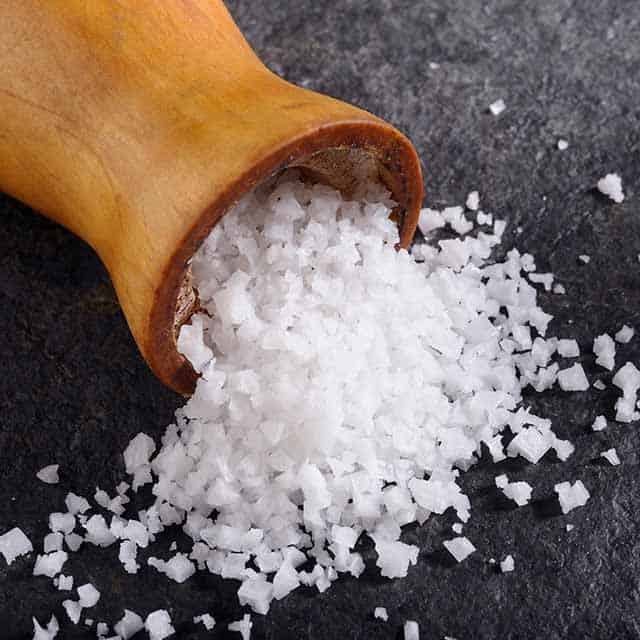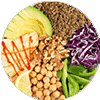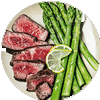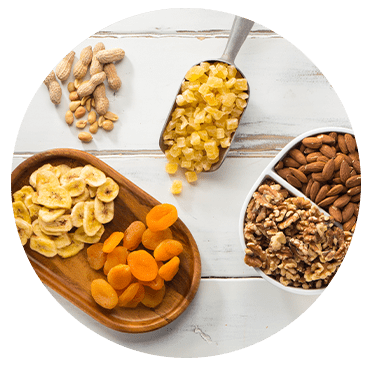
Salt is one of the oldest and most commonly used seasonings around the globe. It takes foods from bland to brilliant. It makes our bodies function and thrive. It’s abundant and inexpensive, but it’s also overused.
The recommended daily allowance (RDA) of sodium for the average adult is 2,360 milligrams, though the Center for Disease Control and Prevention (CDC) recommends no more than 1,500 milligrams.
Sounds like a lot—but don’t be fooled. Those numbers equal about one teaspoon of salt (or less) for the entire day, and there is sodium in pretty much everything we eat. In fact, 80 percent of the sodium we get comes not from the shaker on the table, but from the foods we eat. Currently, American adults are consuming more than 4,000 milligrams per day, due in large part to the presence of so many processed foods in our diets. The second biggest culprit of sodium overload is the food served in restaurants.
Sodium, however, is vital for a healthy body. It helps maintain water balance and pH levels and enables cells to draw in nutrients. Excessive sweating can lead to salt cravings as an indication of a loss of sodium, dehydration, and/or an electrolyte imbalance. (Be sure to hydrate sufficiently before, during, and after rigorous workouts.)
In excessive amounts, salt can be dangerous to your health. It can contribute to hypertension, heart disease, and may cause the body to retain too much water. To help avoid excess sodium in your diet, dieticians and doctors suggest caution when adding salt to your foods. Instead use herbs and salt-free seasonings to flavor your foods. If you must add salt, do so sparingly; a little goes a long way.
At Sprouts, we offer many minimally processed foods, but even natural food products can go overboard with the sodium. So be sure to read labels and understand the terminology:
- Sodium/salt-free: Contains less than 5 milligrams of sodium per serving.
- Very low-sodium: Contains 35 milligrams of sodium or less per serving.
- Low sodium: Contains 140 milligrams of sodium or less per serving.
- Reduced sodium: The sodium has been reduced by at least 35 percent from the regular version.
- Light in sodium: The sodium has been reduced by at least 50 percent from the regular version.
- Unsalted or no salt added: No salt is added during the processing of these foods.
However, they still may be high in sodium because other ingredients may have added sodium.
Like everything else, the key is moderation. From a culinary standpoint, salt is probably the single most important seasoning. And these days, there are many different varieties to choose from.
Table Salt
Table salt, also known as sodium chloride, is mined from underground salt deposits. It is usually heavily processed, stripped of any trace minerals, and may contain chemical additives to prevent clumping. Iodine is often added to processed table salts as an essential nutrient.
What it’s good for: Table salt dissolves quickly, so it is ideal for baking. Due to its fine granules, a single tablespoon of table salt contains more salt than a tablespoon of kosher or sea salt.
Sea Salt
Sea salt is produced through the evaporation of seawater. The evaporation process leaves behind trace minerals and elements indicative of the water source, giving sea salt variations in color and taste. Colors include pink and gray, both prized in the culinary world. You can also find sea salt in fine granules.
What it’s good for: A favorite of chefs who appreciate how the larger granules of sea salt add textured crunch when added at the last moment to finished dishes. It’s also delicious when very lightly sprinkled atop caramel or dark chocolate treats.
Kosher Salt
Kosher salt can be produced from the evaporation of seawater or mined from underground deposits. The name refers to the koshering process. Kosher salt contains no preservatives.
What it’s good for: Kosher salt is another favorite of chefs for its coarse texture. The large crystals make it ideal for preserving because they easily draw moisture out of meats and other foods.
Fleur De Sel
Meaning “flower of salt” in French, fleur de sel is a hand-harvested sea salt. It is scraped from the top layer during the evaporation process before it sinks to the bottom of large salt pans. It contains more mineral complexity than table salt and varies in color from white to gray to pink. Since it is hand-harvested and scarce, it is expensive and is usually reserved for the most special of dishes in the culinary world. Fleur de sel is a specialty item that can be found in gourmet stores or online.
What it’s good for: Fleur de sel makes a fine finishing touch to any gourmet or special meal.
 Salt is one of the oldest and most commonly used seasonings around the globe. It takes foods from bland to brilliant. It makes our bodies function and thrive. It’s abundant and inexpensive, but it’s also overused.
The recommended daily allowance (RDA) of sodium for the average adult is 2,360 milligrams, though the Center for Disease Control and Prevention (CDC) recommends no more than 1,500 milligrams.
Sounds like a lot—but don’t be fooled. Those numbers equal about one teaspoon of salt (or less) for the entire day, and there is sodium in pretty much everything we eat. In fact, 80 percent of the sodium we get comes not from the shaker on the table, but from the foods we eat. Currently, American adults are consuming more than 4,000 milligrams per day, due in large part to the presence of so many processed foods in our diets. The second biggest culprit of sodium overload is the food served in restaurants.
Sodium, however, is vital for a healthy body. It helps maintain water balance and pH levels and enables cells to draw in nutrients. Excessive sweating can lead to salt cravings as an indication of a loss of sodium, dehydration, and/or an electrolyte imbalance. (Be sure to hydrate sufficiently before, during, and after rigorous workouts.)
In excessive amounts, salt can be dangerous to your health. It can contribute to hypertension, heart disease, and may cause the body to retain too much water. To help avoid excess sodium in your diet, dieticians and doctors suggest caution when adding salt to your foods. Instead use herbs and salt-free seasonings to flavor your foods. If you must add salt, do so sparingly; a little goes a long way.
At Sprouts, we offer many minimally processed foods, but even natural food products can go overboard with the sodium. So be sure to read labels and understand the terminology:
Salt is one of the oldest and most commonly used seasonings around the globe. It takes foods from bland to brilliant. It makes our bodies function and thrive. It’s abundant and inexpensive, but it’s also overused.
The recommended daily allowance (RDA) of sodium for the average adult is 2,360 milligrams, though the Center for Disease Control and Prevention (CDC) recommends no more than 1,500 milligrams.
Sounds like a lot—but don’t be fooled. Those numbers equal about one teaspoon of salt (or less) for the entire day, and there is sodium in pretty much everything we eat. In fact, 80 percent of the sodium we get comes not from the shaker on the table, but from the foods we eat. Currently, American adults are consuming more than 4,000 milligrams per day, due in large part to the presence of so many processed foods in our diets. The second biggest culprit of sodium overload is the food served in restaurants.
Sodium, however, is vital for a healthy body. It helps maintain water balance and pH levels and enables cells to draw in nutrients. Excessive sweating can lead to salt cravings as an indication of a loss of sodium, dehydration, and/or an electrolyte imbalance. (Be sure to hydrate sufficiently before, during, and after rigorous workouts.)
In excessive amounts, salt can be dangerous to your health. It can contribute to hypertension, heart disease, and may cause the body to retain too much water. To help avoid excess sodium in your diet, dieticians and doctors suggest caution when adding salt to your foods. Instead use herbs and salt-free seasonings to flavor your foods. If you must add salt, do so sparingly; a little goes a long way.
At Sprouts, we offer many minimally processed foods, but even natural food products can go overboard with the sodium. So be sure to read labels and understand the terminology:





















 VIEW ALL
VIEW ALL



